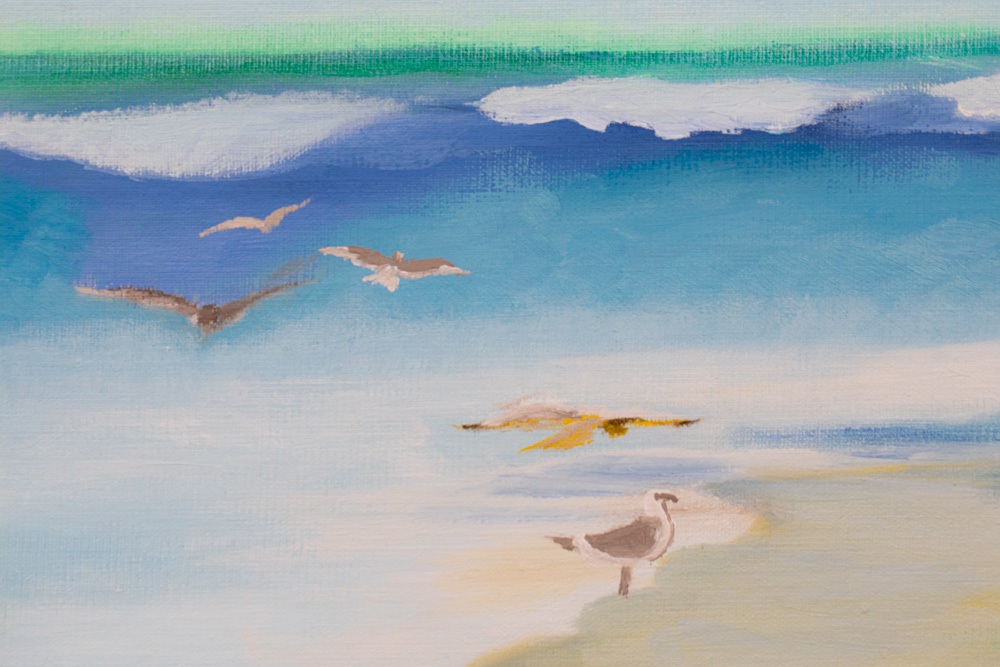POETRY WEEK 2025 CONTEST
First-place
BY DAVID TOPPER
Previously published in Synchronized Chaos Magazine, on October 15, 2022. Copyright is held by the author.

Look,
they are not your usual strokes.
Not the stringent way you controlled your brush
all those years
from Art School to an evening hobby to
this Seascape
that water
these waves
those gulls.
A lifetime drawing & sketching
mostly painting, mainly oils
with details, details, details —
your forte.
You liked it when someone said
“Oh, it looks so real, like a photograph.”
But, of course, you worked from magazines
National Geographic, Life, calendars, too.
Look again,
they are your strokes.
Someone said
“Looks like a watercolour.”
Look closer,
the opaque white
with traces of a brush’s bristles
in oil paint with extra linseed oil
in very thin layers.
The same way you made your sandwiches
thinly spreading the peanut butter & jelly.
A vestige of growing up during The Depression,
part of being frugal.
No, not frugal,
cheap . . . or
tightfisted, as they said then.
Look, really,
they are not your strokes.
Too broad, too loose, too vague
too imprecise, too open, too unfinished
too expressive for your temper —
not your usual rigidity.
Aah,
the onset of dementia,
after those other strokes
released & relaxed your brain’s severe part,
loosening the grip on your hand,
bringing this Seascape into being.
And,
at the same time, as dementia
shut down another part of your brain,
all desire to paint vanished,
leaving Seascape with Gulls
— your first and last unfettered work —
as the very best artistic expression in your life.
***

David Topper is a former professor at the University of Winnipeg, Canada, where he taught the History of Science and the History of Art for 42 years, retiring in 2012. He was the recipient of two teaching awards: the Robson Memorial Award for Excellence in Teaching at the University of Winnipeg (1981), and the National 3M Teaching Fellowship (1987). He is the author of six books: Quirky Sides of Scientists (2007), How Einstein Created Relativity from Physics and Astronomy (2013), Idolatry and Infinity: Of Art, Math, and God (2014), Einstein for Anyone (2015/16), A Solitary Smile: A Novel on Einstein (2018), and Remnants of Our Life with Your Dementia: A Poetic Memoir (2021). He discovered his inner-fictional muse while writing the biographical novel on Albert Einstein. And then was inspired to write the poetry book Remnants, on his late wife, Sylvia, while reading his former student and later colleague, Catherine Hunter’s prize-winning book, St. Boniface Elegies. Since then, he has published over 50 poems, short stories, and historical-fiction essays.
monperatoto slot gacor situs hk pools slot gacor situs toto slot gacor